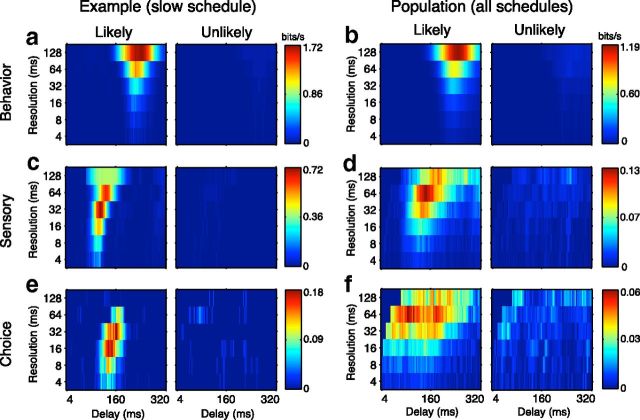Figure 5.
a–f, Pulse likelihood modulation of the reliability and timing of behavioral (a, b) and physiological (c–f) responses for an example neuron (a, c, e) recorded with the 0.5 Hz schedule and the population, including cells recorded with all schedules (b, d, f). Color indicates reliability (bits/s) of the relationship between pairs of variables. Color scales are consistent between conditions of high and low pulse probability but are different for different types of calculated information to emphasize the shape of the surfaces. Surfaces indicate how this reliability changed according to temporal sampling (resolution) and interval between the variables (delay). Population surfaces are the average of all surfaces from individual neurons. Behavioral information (a, b), describing the correlations between pulse occurrence and saccade initiation, is plotted as a function of delay and resolution. With regard to neuronal discharge, two types of information were computed. Sensory information (c, d) describes the mutual information between pulse occurrence and spike count, whereas choice information (e, f) describes the mutual information between saccades and spike count. Both behavioral and physiological reliabilities were strongly modulated by likelihood in both the example recording session and over the population.

